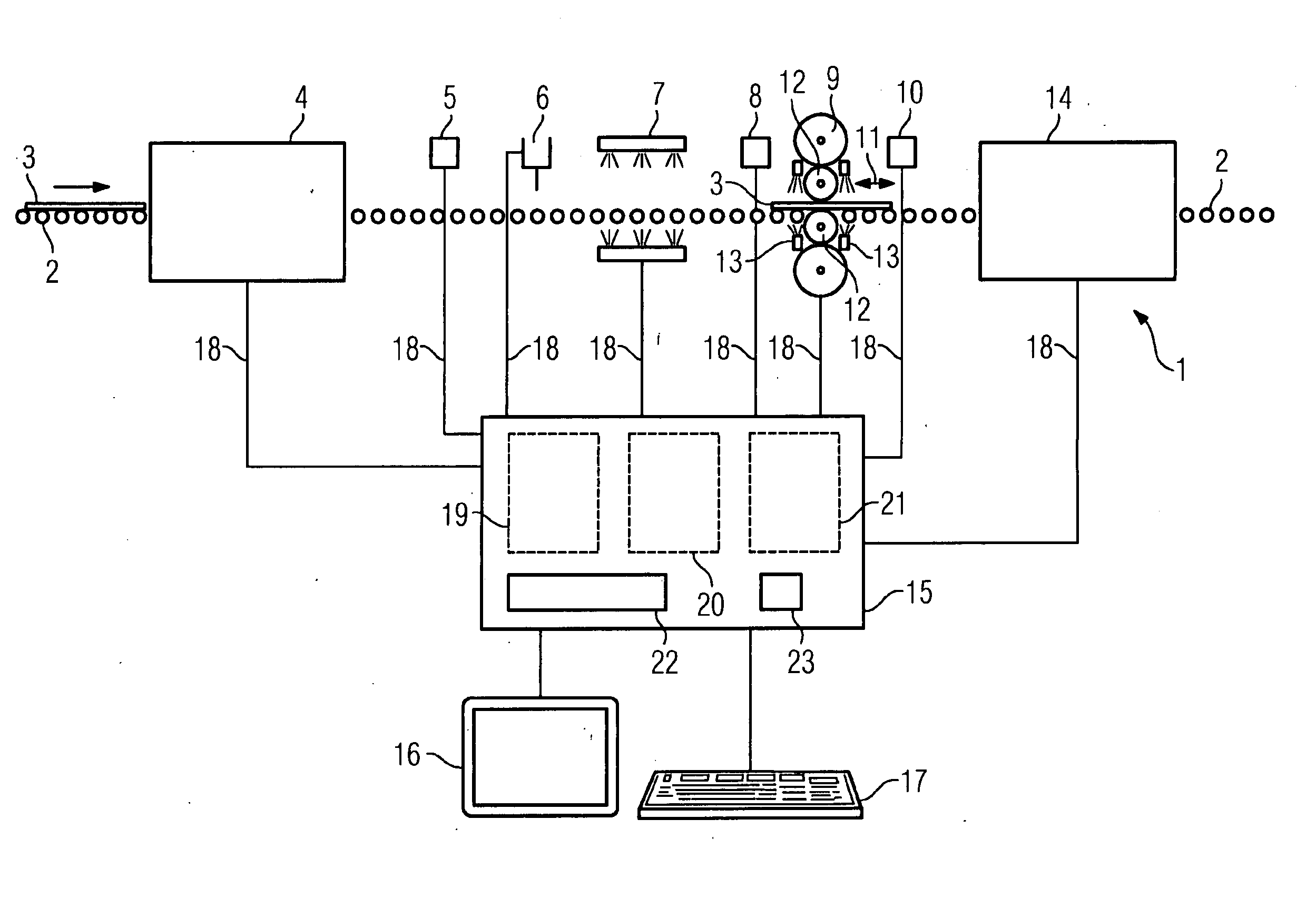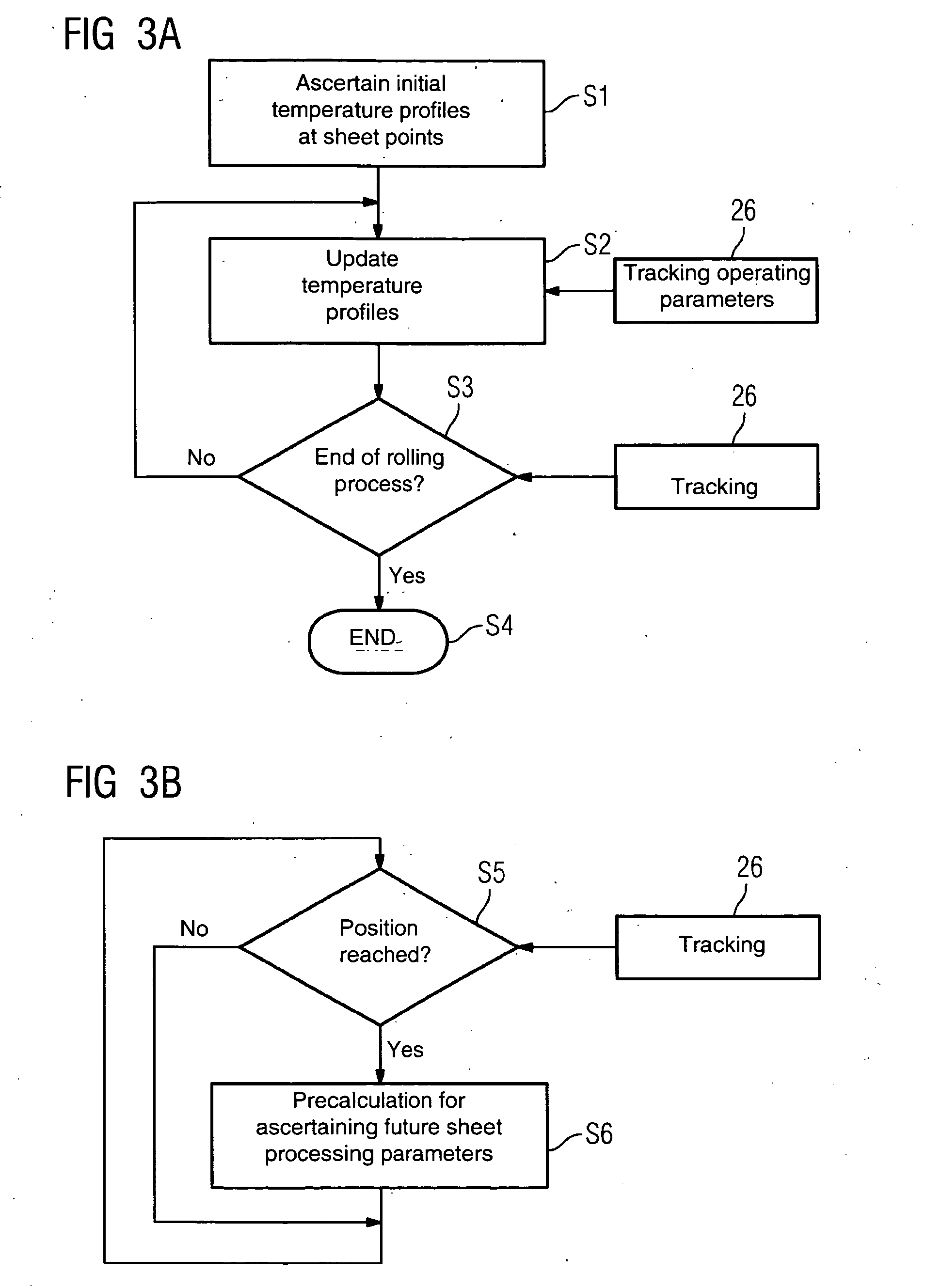Method for monitoring the physical state of a hot-rolled sheet or hot-rolled strip while controlling a plate rolling train for working a hot-rolled sheet or hot-rolled strip
- Summary
- Abstract
- Description
- Claims
- Application Information
AI Technical Summary
Benefits of technology
Problems solved by technology
Method used
Image
Examples
Embodiment Construction
[0043]FIG. 1 shows a plate rolling train 1. Hot-rolled sheets 3, of which only two are shown here for the sake of clarity, are carried through the plate rolling train 1 by means of roller tables 2. The hot-rolled sheet 3 is initially reheated in a furnace 4. After leaving the furnace 4, a first temperature measurement is taken by means of a pyrometer 5. The hot-rolled sheet is cleaned of scale as fully as possible in a descaling unit 6. Provision is then made for a cooling unit 7 which is used to adapt the temperature of the hot-rolled sheet 3. A second pyrometer 8 measures the temperature of the hot-rolled sheet 3 before a rolling stand 9, and a further pyrometer 10 measures the temperature after the rolling stand 9. According to the number of passes required, the hot-rolled sheet 3 is guided through the rolling stand 9 more than once, reversing alternately from the respective side, as indicated by the arrow 11. In addition to the upper and lower working rolls 12, the rolling stand...
PUM
| Property | Measurement | Unit |
|---|---|---|
| Grain size | aaaaa | aaaaa |
| Temperature | aaaaa | aaaaa |
| Force | aaaaa | aaaaa |
Abstract
Description
Claims
Application Information
 Login to View More
Login to View More - R&D
- Intellectual Property
- Life Sciences
- Materials
- Tech Scout
- Unparalleled Data Quality
- Higher Quality Content
- 60% Fewer Hallucinations
Browse by: Latest US Patents, China's latest patents, Technical Efficacy Thesaurus, Application Domain, Technology Topic, Popular Technical Reports.
© 2025 PatSnap. All rights reserved.Legal|Privacy policy|Modern Slavery Act Transparency Statement|Sitemap|About US| Contact US: help@patsnap.com



